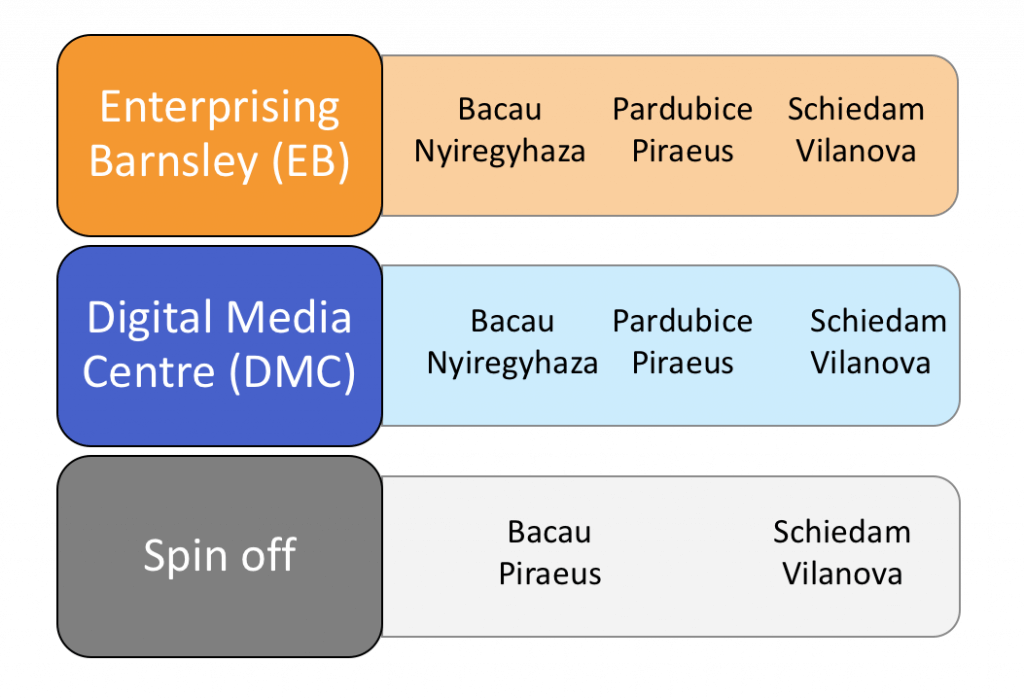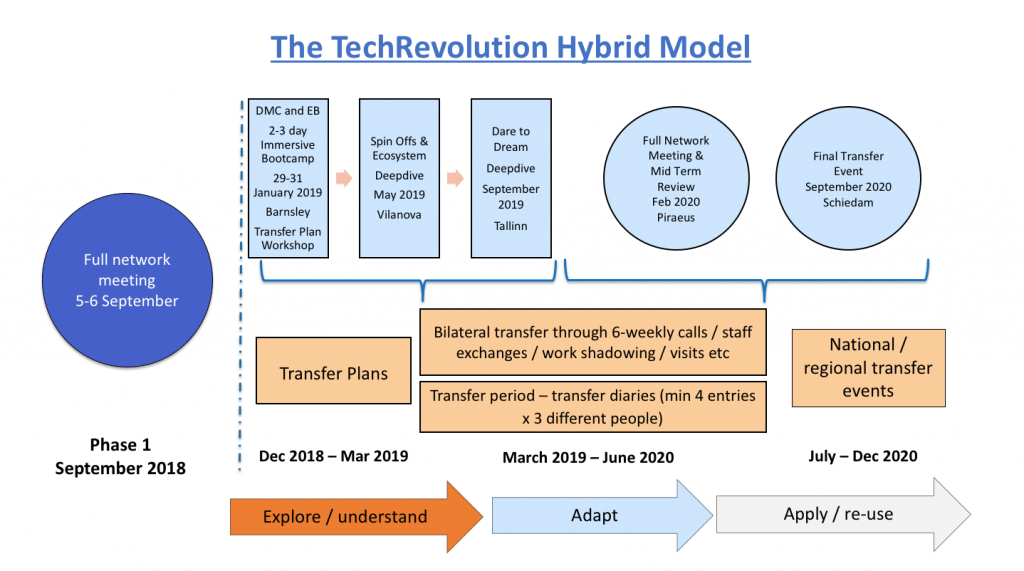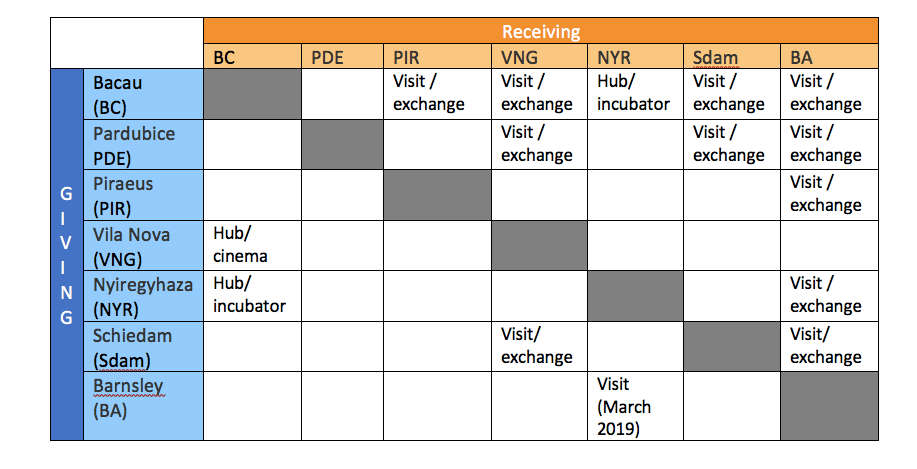Transferability and Methodology Outline
This final study section provides an overview of the transfer network, drawing on material previously presented. It includes a final overall assessment of its transfer potential. Most importantly, it sets out the network’s proposed methodology for achieving good results.
Transfer Network Methodology
As set out above, it is simply not possible or realistic to expect any of the transfer partners to transfer all elements of the good practice within the duration of the transfer network. The scale and complexity of the good practice as a whole means that much of the transfer will focus on development of the foundations from which cities can go on to grow a successful digital economy and ecosystem. It is likely therefore that some of the ‘softer’ elements of the good practice – like the business support and community offer – will be more transferable than others.
At the same time, Piraeus, Pardubice, Bacau, Nyiregyhaza and Schiedam all plan to open new physical spaces and places for digital start-ups and entrepreneurs within the duration of the Transfer Network. The extent to which this can be influenced by learning from the DMC experience in Barnsley however may (in most cases) be somewhat limited due to constraints around funding, public procurement and contracting. These partners will need to use every opportunity to affect how their buildings are designed but, in reality, they will probably have more influence over the softer, business and community support activities which could be housed within the buildings and which will undoubtably contribute both to occupancy and success.
Because the good practice itself is actually a collection of lots of different activities, not all of the partners are equally interested in each and every element. The table below summarises what are perceived to be the top levels of interest. Of course, this does not in any way imply that the cities are not interested in the other elements. It is simply a way of showing proposed emphasis and focus during the transfer phase, acknowledging the duration and resources available for transfer.
Taking all of this into consideration, the proposed transfer methodology is a hybrid model, taking elements of both the carousel and radial models. This is summarised in the diagram below and explained in more detail in the table that follows.
Summary Table on Transfer Interest

Taking all of this into consideration, the proposed transfer methodology is a hybrid model, taking elements of both the carousel and radial models. This is summarised in the diagram below and explained in more detail in the table that follows:

Summary table showing partner interest in bilateral exchange

The table above sets out the interest expressed by cities in bilateral visits and exchanges – or simply bilateral conversations and peer support around specific themes or challenges. In addition some small, related thematic clusters are emerging as follows:
- Schiedam, Piraeus and Vilanova share an interest in blue growth.
- Vilanova, Schiedam and Barnsley share an interest in E-health.
- Schiedam and Nyiregyhaza share an interest in the Eurotowns network.

